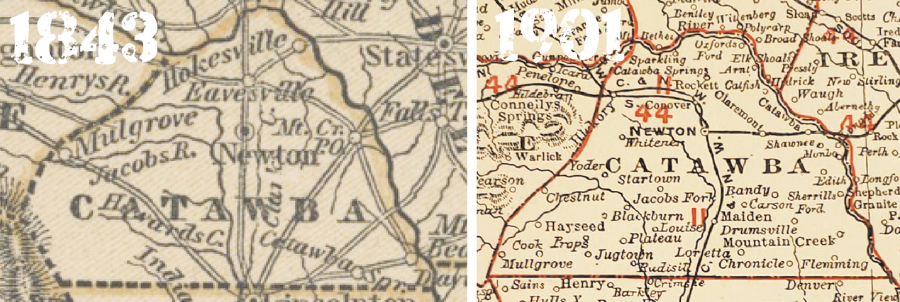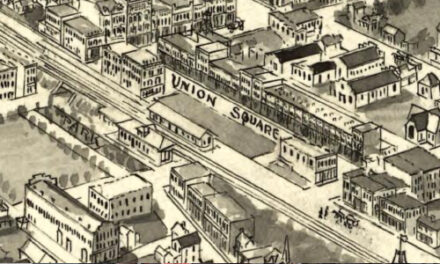
Every region has a curious mix of names that come from the people who occupied the land. Some names stuck, others not. Did you know that in Catawba County a town known as Eavesville was one of the largest, once upon a time. So was Hokesville, Mulgrove and Hayseed, all gone or receded into obscurity.
Older maps of Catawba County shows that Catfish, just north of the area where Interstate 40 crosses into Iredell County retained its name. The lore was that British soldiers on the hunt for Patriots rested on the banks of the Catawba and found a plentiful catch. The army that included local loyalists, under the command of Charles Cornwallis, were on their way to Guilford Courthouse and ultimate defeat by those rebels when they met in Yorktown. If you mention Catfish to some folks around here, they know the area as well as the fish.
Places like Mountain Creek and Long Island are easy to figure out where the name came from, though the latter now rests under the waters of Lake Norman. Geography also defined how Longview (no one can agree if it’s one word or two, opinions vary) got its name, just like Ridgeview. However, Ridgeview was at one time known as Bobtown, in honor of Bob Shuford, a prominent resident. Places like Piney Woods and Granite Falls were also named for their topographic features. Others got their designation for less than obvious reasons.

Photo Caption: Two maps of Catawba County, 1843 (left) and 1901. We would get lost in that world.
Take for example the large railroad yard between Hickory and Conover. Oyama is named for a Japanese hero of the Russo-Japanese War. Why? No one seems to know other than both came to prominence about the same time, in the early days of the 20th century.
A couple of smashups were mentioned last week. Here is one more. Banoak, the combination of Bandy’s and Oak Hill came together to define the community down on Highway 10 in the southwestern corner of Catawba County.
Sometimes a community gets named in spite of itself. The area now popularly known as Viewmont was originally called Windy City. Apologists say it was for the wind that came off the Catawba River. After all, Viewmont is situated on a hill overlooking the river. Others, even those who grew up there admit that the name came from the fact that among them were certain bloviating types (to bloviate means “to talk at length in an inflated or empty way”). That’s not the nicest of reasons to label a place and over the years you find fewer and fewer businesses using the moniker. You can understand why they moved away from calling themselves Windy City.
Supposedly, early Hickory mayor J.G. Hall named the adjacent community of Highland, which once was its own town until incorporated into Greater Hickory in 1931. He did so because it recalled for him the Scottish highlands. He remembered the region from the novels of Sir Walter Scott, a popular writer whose works carried over from the Old World to the New.
A community like Sherrill’s Ford describes a bit of history. Adam Sherrill, his family and his enslaved persons crossed the Catawba in 1747 and settled on the western side. In similar fashion Oxford’s Ford was named for a family that lived along river and when the dam was built in 1927, the name stuck.
Got one? A unique story about how an area landmark was identified? Send it to me via Focus and we’ll report the odd circumstances on how the places we drive though every day were designated.








